- News
- Reviews
- Bikes
- Components
- Bar tape & grips
- Bottom brackets
- Brake & gear cables
- Brake & STI levers
- Brake pads & spares
- Brakes
- Cassettes & freewheels
- Chains
- Chainsets & chainrings
- Derailleurs - front
- Derailleurs - rear
- Forks
- Gear levers & shifters
- Groupsets
- Handlebars & extensions
- Headsets
- Hubs
- Inner tubes
- Pedals
- Quick releases & skewers
- Saddles
- Seatposts
- Stems
- Wheels
- Tyres
- Tubeless valves
- Accessories
- Accessories - misc
- Computer mounts
- Bags
- Bar ends
- Bike bags & cases
- Bottle cages
- Bottles
- Cameras
- Car racks
- Child seats
- Computers
- Glasses
- GPS units
- Helmets
- Lights - front
- Lights - rear
- Lights - sets
- Locks
- Mirrors
- Mudguards
- Racks
- Pumps & CO2 inflators
- Puncture kits
- Reflectives
- Smart watches
- Stands and racks
- Trailers
- Clothing
- Health, fitness and nutrition
- Tools and workshop
- Miscellaneous
- Buyers Guides
- Features
- Forum
- Recommends
- Podcast
review
£1,424.00
VERDICT:
Decent performing aero wheels with the advantage that you can dabble in tubeless tyres if you want to give that a try.
Weight:
1,630g
Contact:
www.velocite-bikes.com
At road.cc every product is thoroughly tested for as long as it takes to get a proper insight into how well it works. Our reviewers are experienced cyclists that we trust to be objective. While we strive to ensure that opinions expressed are backed up by facts, reviews are by their nature an informed opinion, not a definitive verdict. We don't intentionally try to break anything (except locks) but we do try to look for weak points in any design. The overall score is not just an average of the other scores: it reflects both a product's function and value – with value determined by how a product compares with items of similar spec, quality, and price.
What the road.cc scores meanGood scores are more common than bad, because fortunately good products are more common than bad.
- Exceptional
- Excellent
- Very Good
- Good
- Quite good
- Average
- Not so good
- Poor
- Bad
- Appalling
A rare thing, Velocite RT50 wheels have all-carbon rims for low weight, a deep rim profile for aerodynamics and are compatible with tubeless tyres. Oh, and they're also pretty good, both with conventional tyres and with tubeless.
The RT50 wheels sit at the top of Velocite's wheel range and in fact they currently occupy a niche almost all their own on the market, as full-carbon, aero, tubeless clincher wheels. That's tubeless, rather than tubular, just so we're clear. I talked to a few riders while out testing these wheels who were unaware of tubeless road tyres and assumed that I meant tubular. Let's deal with this first, then.
Tubeless - the whys and wherefores
Tubeless means a clincher rim and tyre but no inner tube (as opposed to a tubular tyre which is, well, a tube that you glue onto a suitable wheel.) You get a valve that pushes through the rim (similar to a car tyre, but with a Presta valve) and you need some sealant to make everything airtight. You might imagine that doing away with the inner tube is primarily to save weight, but you'd be wrong. Tubeless tyres are generally no lighter than an equivalent conventional clincher AND inner tube. So why do it?
The two primary advantages cited for tubeless tyres are improved puncture resistance and lower rolling resistance. Pinch-flats are effectively eliminated as there is no inner tube to get pinched and if you ride over a thorn or a sliver of glass, the sealant (which remains liquid inside the tyre for several months) should just seal it up with only a small loss of pressure.
The lower rolling resistance is because the movement of the tyre and inner tube sliding against each other slows down a conventional clincher tyre. Unlike tubular tyres, you can still fit an inner tube inside tubeless tyres if you need to, so you have a fall-back in case of a puncture where the sealant doesn't do the trick.
There are no end of tubeless compatible wheels and tyres for mountain bikes, but not many yet for the road. "Ghetto tubeless" - using non tubeless-specific tyres/rims without an inner tube - is considered a bad idea for road bikes. The high pressures mean a significant risk of the bead blowing off the rim; tubeless tyres have a special bead designed to hook firmly into the rim.
Velocite claim that these are the first true full carbon tubeless wheels on the market, although French brand Corima have been marketing tubeless carbon wheels for a while now. Momentum is certainly building behind tubeless, however, and Easton's EC90 Aero 55 [link /content/news/87557-easton-launch-ec90-aero-55-wheels] will also hit the shops in the not too distant, although are likely to be at a higher price-point.
Construction and quality
As received (brand new, from an undamaged box) the RT50s were not true. This was an unwelcome surprise, not least because Velocite boast of the "iterative three stage process of de-stressing and re-truing" that they use "to deliver you a wheelset that is true and remains true even after extensive use". Well, our set were certainly not true - as much as 1mm off in one place, in fact.
We've since been contacted by Velocite to let us know that they are now doing final QA in the UK too, so your wheels should be spot on.
Unlike Mavics, you don't need a special tool for the nipples, but you do need the tool to stop the bladed spokes twisting, which isn't provided. The nipples have a plastic collar to stop them loosening of their own accord, as you find on a Nyloc nut. A nice idea, although I just found it made them rather hard to turn.
As I didn't have any tubeless tyres to hand when I got these wheels, I fitted the Mavic Yksion tyres I'd been using on my Ksyriums (with inner tubes).
On the road
Later than planned, having wielded the spoke key, I got out the front door and hit the road, to find that on the road there's plenty to like about these wheels. First impressions were of a solidly-built wheelset that gave confidence in corners and rolled well. I rode some known Strava segments flat-out on a windless day, which certainly suggested that they were measurably faster at speed than my Mavics.
Windier days' riding showed them to be very unproblematic in a cross-wind. You might hold the bar just a little tighter on a blowy day but I was never left feeling like they seriously adversely affected my line. Taking the RT50s racing, I had a couple of decent results in crit races and posted an improved time on a 10 mile time-trial; certainly encouraging but in each case there are so many other factors at play that I'd hesitate to say it was all down to the wheels.
Aero wheels are something of a dichotomy - few upgrades make your bike look so much faster while having a comparatively small effect on your rate of progress. Your wheels represent a rather small percentage of your frontal area and the aerodynamic savings to be made through rim profile (compared to, say, your body position) are modest. "But they make such a great noise!" say some, although the RT50s are fairly quiet for deep rims, probably because the walls are necessarily thicker than tubular rims.
Aero vs weight
A common dilemma for a cyclist thinking of upgrading wheels is "should I go lighter or more aero?" If you can afford it, you most likely want both, or at least one without giving too much away on the other. The RT50s are a pretty respectable weight for a 50mm clincher wheelset. We weighed them at 1672g (taped with tubeless valves but without skewers) compared to the claimed 1630g weight. Corima's Aero+ tubeless wheelset are a little lighter and a bit pricier. Tubular wheelsets (whose rims have to take much less stress than clinchers) would be lighter for an equivalent price.
Velocite use their Gram hubs here, with smooth-running sealed EZO cartridge bearings. They are available in Shimano/SRAM 10 speed, Campagnolo 11 speed and Shimano 11 speed configurations (with a modest premium for the 11-speed versions). Velocite boast that the rear hub has the widest flange-to-flange spacing of any hub on the market and that allows for particularly stiff wheels. In my experience (having trued them as best I could, to run the brakes pretty close) I did see some brake rub when sprinting. Hub servicing was not required during the review period but looks straightforward, requiring only Allen keys.
The rims are made of uni-directional carbon finished with a 3k carbon weave. At 23mm they are a medium-width rim - some competitors are up to 5mm wider. The rim bed is only drilled for the valve so there are no spoke holes to seal up. Overall finish is excellent and the wheelset as a whole certainly has a quality feel to it, as you would hope, for the price. The decals are removable and - a nice touch - reflective. I'm not entirely sold on the graphics, but if you don't like them, they're easy to remove.
Going tubeless
So what about running them tubeless? A few weeks after getting the wheels, we got a set of Schwalbe Ultremo ZX Tubeless into road.cc towers so it was time to change. The Ultremos come as a package with 60ml of sealant and some lube intended to help get the tyre beads onto the rim. The process for mounting the tyres is as follows: fit the valve into the rim, lever the tyre into place (the lube helps here), pump energetically to get the beads to push out against the rim.
Once they're in place, you remove the valve core with the tool provided with the tyres and pour 30ml of sealant into each tyre. Replace the valve core and give the wheels a good shake to get the sealant everywhere it needs to be, before inflating. Easy, huh?
I'd previously removed most of the tape that was on the RT50s rims as supplied, to have a better look at the rim, and this proved to be a mistake. Without it, the tyre bead wouldn't get into position no matter how hard I pumped - the tape helps it slide into position. I used some cut-down duct tape instead, which did the trick and I got the tyres to inflate. However, I never really managed to get a good seal - over a couple of days they'd go flat. The bottle of sealant supplied with the tyres is enough to fit them once - if you need to take them off again, you'll need more - so I never got around to having another go at fitting them, instead just became resigned to pumping them up each time I rode.
Partly for this reason, I wasn't really convinced about tubeless tyres to begin with. Fitting them is a faff, and I can't say I could really feel any difference in rolling resistance (although I'm ready to believe that this can be measured in the lab).
Puncture resistance is the central thrust in the tubeless evangelists' argument, and I didn't have a single puncture when testing these wheels, of which half was with inner tubes and half was tubeless. Make of that what you will. I have to admit I grew to appreciate knowing it was unlikely I'd see a ride disrupted (or race ruined) by a flat.
Having no tube to pinch-flat allows you to run lower tyre pressures, giving a more comfortable ride. On 23 section tyres I'd typically run about 110psi and I experimented down to 90psi without any issues.
Braking
Braking is an area where carbon rims generally fail to match up to their aluminium counterparts. Velocite claim to use a particularly temperature-resistant resin here, which can cope with temperatures of up to 190degC without degrading. Lacking any nearby mountains, I couldn't get them anywhere near that hot, but it's good to know. I dragged the brakes down some of the biggest hills around Bath and at the bottom the rims were hot but not burning to the touch. At the end of the review period there was no visible wear to the brake tracks at all.
As regards the ability to stop in a hurry, at the start of the test I was surprised at how strong the brakes felt, but this seemed to gradually degrade over time, and by the end, braking was certainly less powerful than on alu rims, but not unacceptably so. Braking in the wet posed no particular problems.
The Velocite RT50s are supplied with skewers, spare spokes, tubeless valves and their proprietary brake pads. I couldn't get an answer from the distributor about whether other pads could be used without warranty issues. A blog post from 2011 on the Velocite website suggests that they previously insisted on the use of their own pads, but the warranty card that came with the wheels makes no mention of any such requirement now.
On the subject of which, Velocite offer a crash replacement policy for 2 years on their wheels - if you damage them then you can buy replacements at 60% of list price.
Conclusion
In the rarefied world of carbon wheelsets, the Velocite RT50s represent a genuinely novel option. If you want to run tubeless there are other options (such as Stans), but not many deep carbon ones. For the money, they are a well made and fairly light aero wheelset. We never got to the bottom of why our set weren't true (and that would be pretty galling if you'd just bought them) but the importer insisted that this was the only instance they'd seen. If you can get a good seal then you could make a case for tubeless being a better option for most applications than tubular tyres. If you don't want the faff, then there are cheaper carbon clinchers available.
Verdict
Decent performing aero wheels with the advantage that you can dabble in tubeless tyres if you want to give that a try.
road.cc test report
Make and model: Velocite RT50 tubeless carbon wheelset
Size tested: 700c
Tell us what the product is for, and who it's aimed at. What do the manufacturers say about it? How does that compare to your own feelings about it?
Velocite RT50 wheels are the only true full carbon tubeless wheels in the market. They were developed to deliver the optimal balance of low weight, class leading lateral stiffness, easy maintenance and absolute reliability. When used with high quality road tubeless tires and liquid sealant, even getting a flat tire is virtually eliminated.
Tell us some more about the technical aspects of the product?
Full carbon fiber composite rims with resin glass transition temperature (Tg) in excess of 190° C
50mm tall x 23mm wide symmetrical airfoil profile with zero pitching moment for safe cross wind handling
Reflective and removable decals
20/24 Gram hubs with 2:1 lacing on the rear wheel, radial front, 10° engagement, double row pawls, very low drag
1630g per set
Rate the product for quality of construction:
7/10
Points dropped here for the wheels being delivered out of true. Otherwise both the hubs and rims are very nicely made and gave no cause for complaint.
Rate the product for performance:
8/10
In terms of subjective feel and as best as I could measure it, these are definitely faster than the non-aero wheels I normally run on my race bike. The difference from one deep-section wheelset to another are much harder to quantify without a test lab, but Velocite's own testing suggest that they are certainly competitive.
Rate the product for durability:
8/10
Good to see no visible wear and tear to the brake track. The hubs were still running well at the end of the test. There are some impressive videos on Velocite's website showing the tests these wheels go through - if they can cope with that then they should last a good while.
Rate the product for weight, if applicable:
7/10
Sub-1700g is a good if not a spectacular weight for a 50mm carbon wheelset. Cheaper (non tubeless) aero wheels are available. Much lighter is likely to mean much more expensive.
Rate the product for value:
6/10
Hard to score this one - if you are set on a tubeless aero carbon wheelset then these are competitively priced, and almost certainly undercut the forthcoming Easton competitors. If you're ambivalent about tubeless, well, it's the best part of £1500 for a set of wheels. Which is a lot.
Tell us what you particularly liked about the product
Rims and hubs were really well made and gave every appearance that they'd last well. Deep carbon wheels make your bike look really fast, and probably make you a bit faster too. I wouldn't say I became a tubeless convert, but I grew to see some of the benefits. Reflective rim decals is a good idea.
Tell us what you particularly disliked about the product
Out-of-true fresh from the box is hard to forgive on a £1500 wheelset. Fitting tubeless tyres can be a messy and frustrating job, although you probably get the hang of it once you've done it a few times.
Did you enjoy using the product? Yes.
Would you consider buying the product? I don't have that sort of money. I would be more likely to buy a cheaper set of carbon clinchers and forego tubeless.
Would you recommend the product to a friend? If they wanted to go tubeless, yes definitely. Otherwise maybe not.
About the tester
Age: 35 Height: 6 Weight: 78kg
I usually ride: Boardman CX team for the daily commute My best bike is: Rose Xeon CRS
I've been riding for: Over 20 years I ride: Most days I would class myself as: Expert
I regularly do the following types of riding: road racing, time trialling, commuting, touring, club rides, sportives, general fitness riding, fixed/singlespeed, mtb,
Jez spends his days making robots that drive cars but is happiest when on two wheels. His roots are in mountain biking but he spends more time nowadays on the road, occasionally racing but more often just riding.
Latest Comments
- Born_peddling 7 hours 3 min ago
Muddyfox tour 100's I've wide & flat feet plus there's the optional choice of using cleats with them...
- Prosper0 6 hours 57 min ago
Just doing the Lord's work in case anyone's interested in this product. This Mucoff Pump is a £100 rebrand of an £85 Rockbros rebrand of a £60...
- mdavidford 7 hours 42 min ago
You forgot ignoring half the race to show awkward interviews with the riders' Proud Parents™ instead.
- mdavidford 7 hours 46 min ago
Obviously it means 'springing out of the bunch' on a critical sector. Or maybe it's referring to the time of year.
- David9694 8 hours 33 min ago
Car crashes through garden wall for second time in 18 months https://www.wiltshire999s.co.uk/car-crashes-garden-second-time/
- David9694 8 hours 35 min ago
Woman taken to hospital after flipping car onto roof in Trowbridge...
- A V Lowe 9 hours 17 min ago
Its blindingly obvious from the image that the DKE of the buses include the mirrors which extend to nearly reach the edge of the tarmac pavement on...
- Sredlums 9 hours 50 min ago
It's sad when being very good at your job - any job - isn't enough to earn a decent living. It shouldn't be that way....






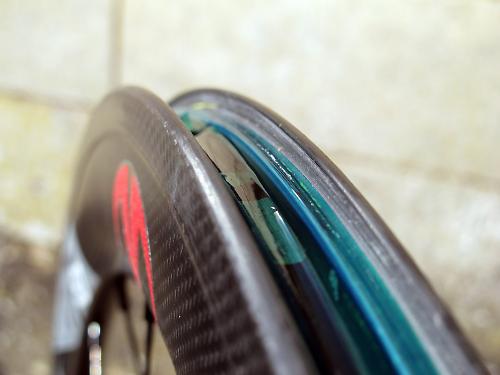
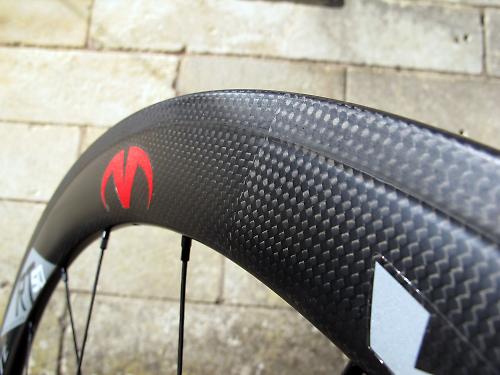



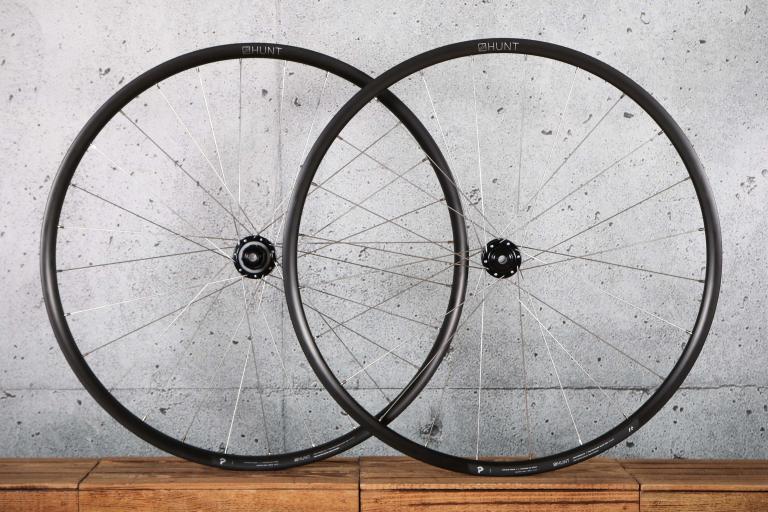

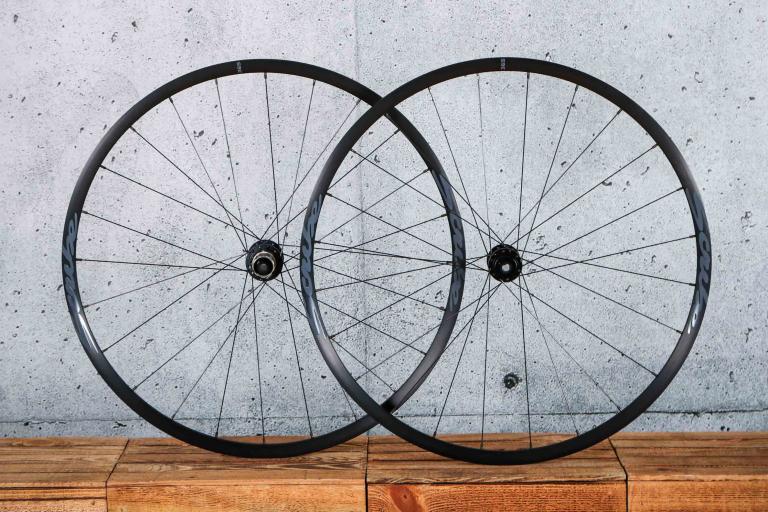
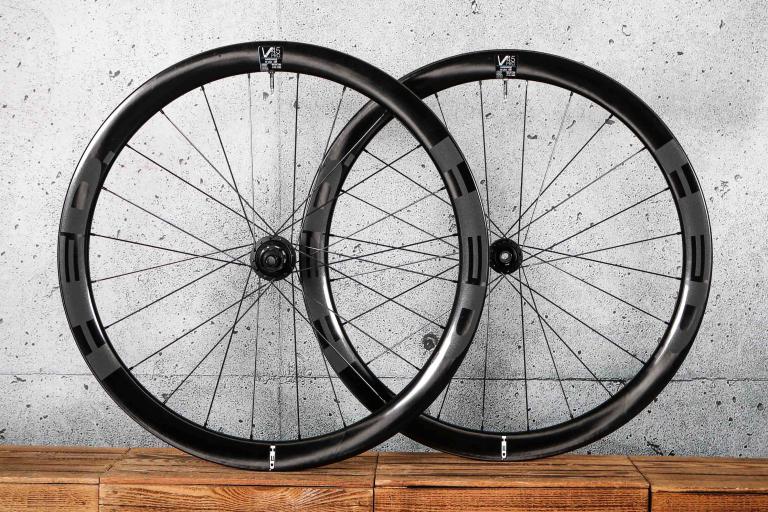
Add new comment
5 comments
I've been riding tubeless road and mtn for many years. Adapted Easton Orion II's with a Stan's road kit a few years back. No problems. Have many other wheelsets (mtn) on various bikes tubeless. Here's the upshot as I see it.
1. Its about the ride. At 170lbs (77kg), I normally would ride clinchers at about 25% more air. At 90psi instead of a more normal 120 they are so jet smooth on all surfaces I'd say they ride better than my tubulars for comfort. Also for high speed descents incredibly stable, ditto cornering.
2. Flats. As stated, easy to fix on the road if you do have one severe enough that the fluid can't fill it. Just put in a tube. You can go long periods with none and usually get home even with a slash and spurting the fluid out while you ride (keeps folks from drafting ) But then to repair it, its certainly more work, as you have to patch tire from the inside. And there's some uncertainty when you get a hole as to whether the fluid will be enough or you have to take it apart and do the patch thing. Also, there's the learning curve of working with them, takes some patience and determination at times, though the road set ups have been easier than some of the mountain set ups.
) But then to repair it, its certainly more work, as you have to patch tire from the inside. And there's some uncertainty when you get a hole as to whether the fluid will be enough or you have to take it apart and do the patch thing. Also, there's the learning curve of working with them, takes some patience and determination at times, though the road set ups have been easier than some of the mountain set ups.
3. Speed. I'm not a racer so I'm not certain though the reviewer above is and he timed himself at at least as fast as his best tubed rides. They don't feel as fast as my more expensive and lighter carbon tubulars but I think that's at least partly the weight. Pro racers are still pretty much with tubulars as far as I know and read.
Conclusion: GREAT ride, substantially nicer than what you are used to with tubes and potential for long periods of no flats, but be ready to mess with them in mounting and when they do end up needing a repair that the fluid can't take care of. The tubeless specific tires are a little more money than many clinchers but WAY cheaper than tubulars especially when you get a flat on a tubular and and need another very expensive tire instead of just a patch.
Have been using this wheelset since june 2013 with tubeless. With 1500 km of varied road and weather conditions, I can agree with the author that they aren't influenced much by crosswind (althoug reaching 12 meters per second and above, any wheelset will be affected).
The wheelset was delivered true and has stayed that way.
I was trying tubeless for the first time with this wheelset, and will never change (I think...). I haven't had one flat yet! Thus, I haven't had any experience changing tyres... But when that time comes, I turn to the experts at the workshop.
You'll have a decent 5 stars from me!
Absolutely, edf242 - I'm sure that with a bit of practice and a bit more sealant it would have been fine. Worth noting that Dave had no particular problems running tubeless
http://road.cc/content/review/95313-schwalbe-ultremo-zx-tubeless-tyres
Getting tubeless wheels to seal is a bit of skill. Dont be put off buying these wheels or any other tubeless system on the basis of this review, it takes a few goes but if you follow the advice on the stans tubeless wheels website (and others), you can pretty quickly get a solution that works for most tyre and rim combinations (this is also a factor). It would also help to buy your own bottle of sealant to play with. A bit of a faff but I've been running my tubeless cx wheels for a few months now with minimal issue and not one puncture.
Thank you for the in depth review!
It is disappointing that the review wheelset arrived out of true however. I would thus like to reassure you and the readers that we do indeed follow a very rigorous wheel assembly and QC procedure as supported by the overall quality of the wheels.
There are nevertheless always (evidently) opportunities for further improvement. Therefore we have since implemented an additional QC step in the UK to check all wheels on arrival. This will ensure that if anything happens to the wheels during shipping, it will be corrected prior to them being delivered to the customers...or the press...